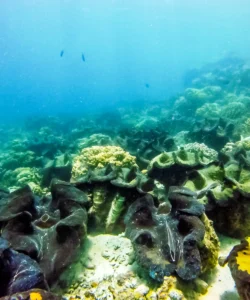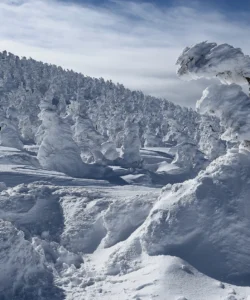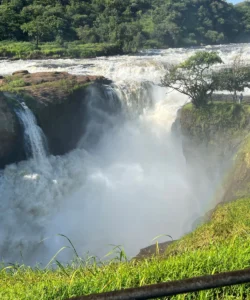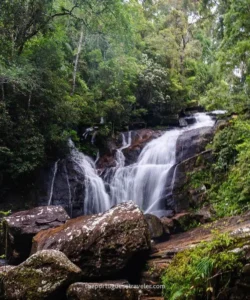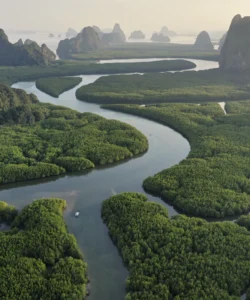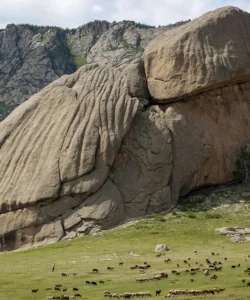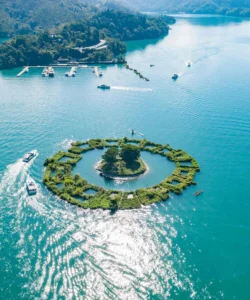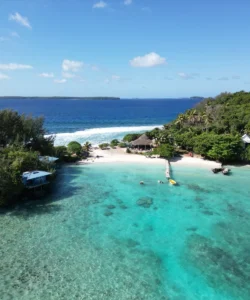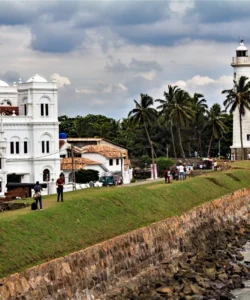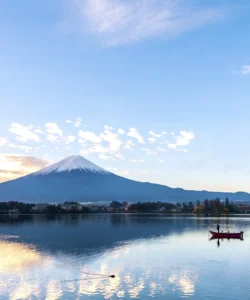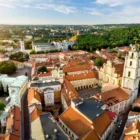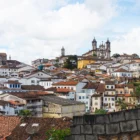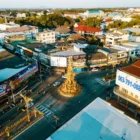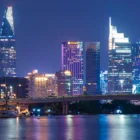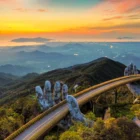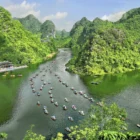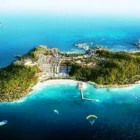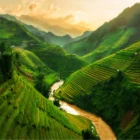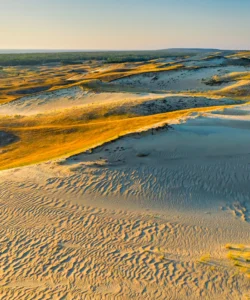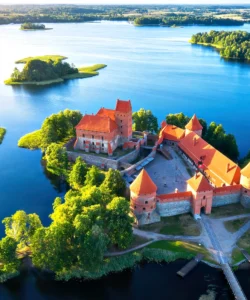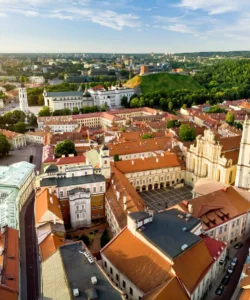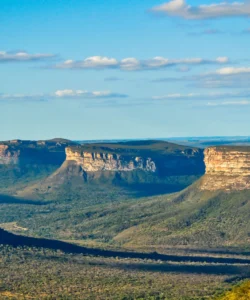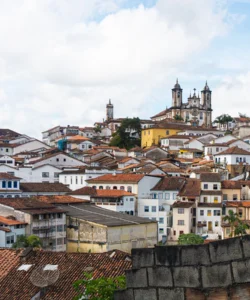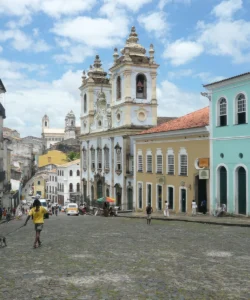Lake Bunyonyi (also spelled Bunyoni) is a stunning freshwater lake located in southwestern Uganda, near the town of Kabale and close to the border with Rwanda. Often described as one of the most beautiful lakes in Africa, it is a truly picturesque and tranquil body of water, dotted with 29 small islands and surrounded by terraced hillsides. Its name, “Bunyonyi,” means “place of many little birds,” aptly reflecting its rich avifauna. Lake Bunyonyi offers a serene and culturally rich retreat, a stark contrast to the rugged adventures of gorilla trekking or savanna safaris.
Name: Lake Bunyonyi (pronounced Boon-yohn-yee)
Address: Kabale District, Southwestern Uganda. Located about 7 km (4.3 miles) west of Kabale town.
How to get there:
Reaching Lake Bunyonyi, involves a significant international journey followed by domestic travel within Uganda (or Rwanda):
- From Entebbe/Kampala (Uganda) to Lake Bunyonyi:
- By Road: A long but scenic drive of approximately 7-9 hours (around 410 km / 255 miles) from Kampala to Kabale/Lake Bunyonyi. This typically requires a sturdy 4×4 safari vehicle. This route is often combined with visits to Lake Mburo National Park or en route to Bwindi Impenetrable National Park.
- By Air: Daily domestic flights (charter) operate from Entebbe or Kajjansi Airfield (near Kampala) to Kisoro airstrip. The flight takes approximately 1.5-2 hours. From Kisoro, it’s about a 1.5-hour drive by safari vehicle or taxi to Lake Bunyonyi.
- From Kigali (Rwanda) to Lake Bunyonyi (Recommended for Southern Uganda Itineraries):
- By Road: This is often the quickest route to Lake Bunyonyi for those flying into Rwanda. A drive from Kigali to the Katuna border crossing (Uganda), then a short drive to Kabale/Lake Bunyonyi, can take as little as 2.5-3.5 hours (including border formalities). This is very convenient if combining with gorilla trekking in Rwanda or southern Bwindi.
- From Kabale Town to Lake Bunyonyi:
- Shared Taxi/Matatu: Local shared taxis (minibuses) or boda-bodas (motorcycle taxis) are readily available from Kabale’s taxi park to various points around Lake Bunyonyi.
- Taxi/Boda-boda: For direct transfers to specific resorts on the lake.
Best Time to Visit:
Lake Bunyonyi is beautiful and enjoyable year-round. However, the drier seasons (June to August and December to February) are generally preferred, as skies are clearer for photography, and the roads/paths are less muddy. Even during the wet seasons (March-May and October-November), rain usually falls in short bursts, and the lush green scenery is magnificent. Temperatures are consistently mild due to the lake’s elevation.
Operating Hours and Entrance Fee:
- There is no entrance fee to Lake Bunyonyi itself, as it is a natural lake with local communities living around it.
- Fees apply for specific activities such as boat rides/canoeing (often negotiated with local guides or through your accommodation), island visits (some islands may have small fees for specific attractions or guided tours), and accommodation at resorts.
Landscape and Architecture:
Lake Bunyonyi’s “architecture” is a captivating blend of natural islands and human settlements seamlessly integrated with the landscape:
- 29 Islands: The defining feature. The lake is dotted with 29 emerald-green islands of varying sizes, ranging from tiny islets with a single tree to larger islands with communities or resorts. Each island has its own unique character and often a fascinating history.
- Terraced Hillsides: The shores of the lake and the surrounding hills are meticulously terraced for cultivation by local farmers, creating a beautiful patchwork pattern that descends towards the water. This human-made agricultural “architecture” is a significant part of the scenic appeal.
- Calm, Deep Waters: Lake Bunyonyi is exceptionally deep (estimated to be Africa’s second deepest after Lake Tanganyika, up to 900 meters in some parts), and its calm, clear, bilharzia-free waters make it safe for swimming.
- Birdlife Haven: The lake’s name (“place of many little birds”) is well-deserved, as it’s a paradise for birdwatching, with over 200 species recorded, including herons, cranes, kingfishers, and various raptors.
- Simple Local Housing: The human settlements around the lake consist primarily of traditional mud-brick or stone houses with corrugated iron or thatched roofs, blending into the rural landscape.
- Tourist Resorts/Camps: A growing number of lodges, guesthouses, and tented camps are built on the mainland or on some of the islands, designed to complement the natural beauty, often with rustic yet comfortable architecture, some with traditional elements.
- Canoes (Dugouts): The traditional dugout canoes used by locals and tourists for transport between islands are an iconic part of the lake’s cultural “architecture.”
What makes it famous:
Lake Bunyonyi is famous for:
- Stunning Scenic Beauty: Widely regarded as one of Africa’s most beautiful lakes, with its numerous islands and terraced hillsides creating a picturesque, almost idyllic, landscape.
- “Place of Many Little Birds”: A renowned birdwatching destination, attracting diverse bird species.
- Safe for Swimming: Unlike many other lakes in East Africa, Lake Bunyonyi is generally considered safe for swimming as it is bilharzia-free, making it a refreshing option after dusty safaris.
- Tranquil and Relaxing Atmosphere: Offers a peaceful and serene retreat from the bustling safari parks or city life, ideal for relaxation, contemplation, and enjoying nature.
- Cultural Experiences: Opportunities to visit local Batwa (Pygmy) communities on some islands, learn about their traditions, or visit local villages and schools.
- Historical Islands: Several islands have unique histories, most notably Punishment Island (Akampene Island), where unmarried pregnant girls were historically left to die or starve. While a somber history, it is a significant cultural landmark.
- Dugout Canoe Rides: Exploring the lake by traditional dugout canoe is a quintessential and immersive experience.
- Proximity to Gorilla Trekking: Its location near Bwindi Impenetrable National Park and Mgahinga Gorilla National Park makes it a popular place for trekkers to relax and unwind after their gorilla encounters.
Differences from some other wonders:
Lake Bunyonyi distinguishes itself from other famous lakes and natural wonders in several key ways:
- High Concentration of Islands: While many lakes have islands, Lake Bunyonyi’s unusually high number of small, emerald-green islands (29 in total) concentrated within a relatively small area creates a unique, almost archipelago-like, visual aesthetic.
- Terraced Hillsides: The extensive terraced cultivation of the surrounding hillsides, a result of human ingenuity and long-standing agricultural practice, creates a distinctive human-sculpted natural landscape that is integral to the lake’s beauty, unlike purely wild or forested lake shores.
- “Punishment Island” Historical Significance: The grim yet fascinating history of Punishment Island is a very specific cultural and historical narrative unique to Lake Bunyonyi, offering a poignant insight into past local traditions.
- Bilharzia-Free (Safe for Swimming): Its status as one of the few large lakes in East Africa that is safe for swimming (bilharzia-free) is a significant practical advantage and differentiator for tourists.
- Unique Combination of Serenity, Culture, and Proximity to Gorillas: It offers a rare blend of profound tranquility, rich local culture (including Batwa interaction), and convenient proximity to mountain gorilla trekking, making it a unique post-gorilla trek relaxation spot that is distinct from purely safari-oriented accommodations.
- Dugout Canoe Culture: The ubiquitous presence and active use of traditional dugout canoes by locals for everyday transport and by tourists for exploration further integrate human culture directly into the natural experience.
In essence, Lake Bunyonyi is a serene and beautiful wonder, a truly unique blend of stunning island landscapes, fascinating cultural history, and a tranquil atmosphere, making it a peaceful and unforgettable highlight of any Ugandan journey.




















